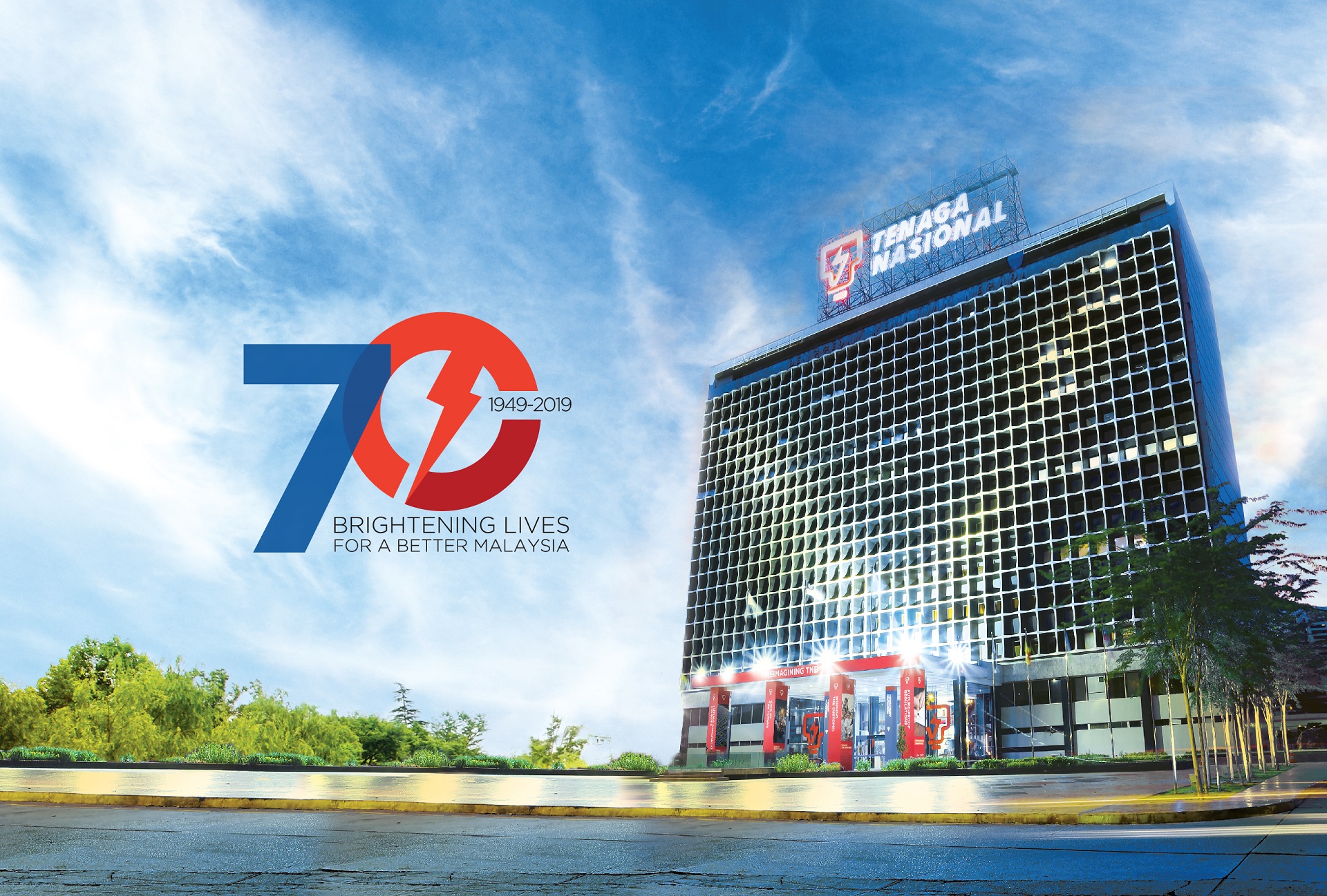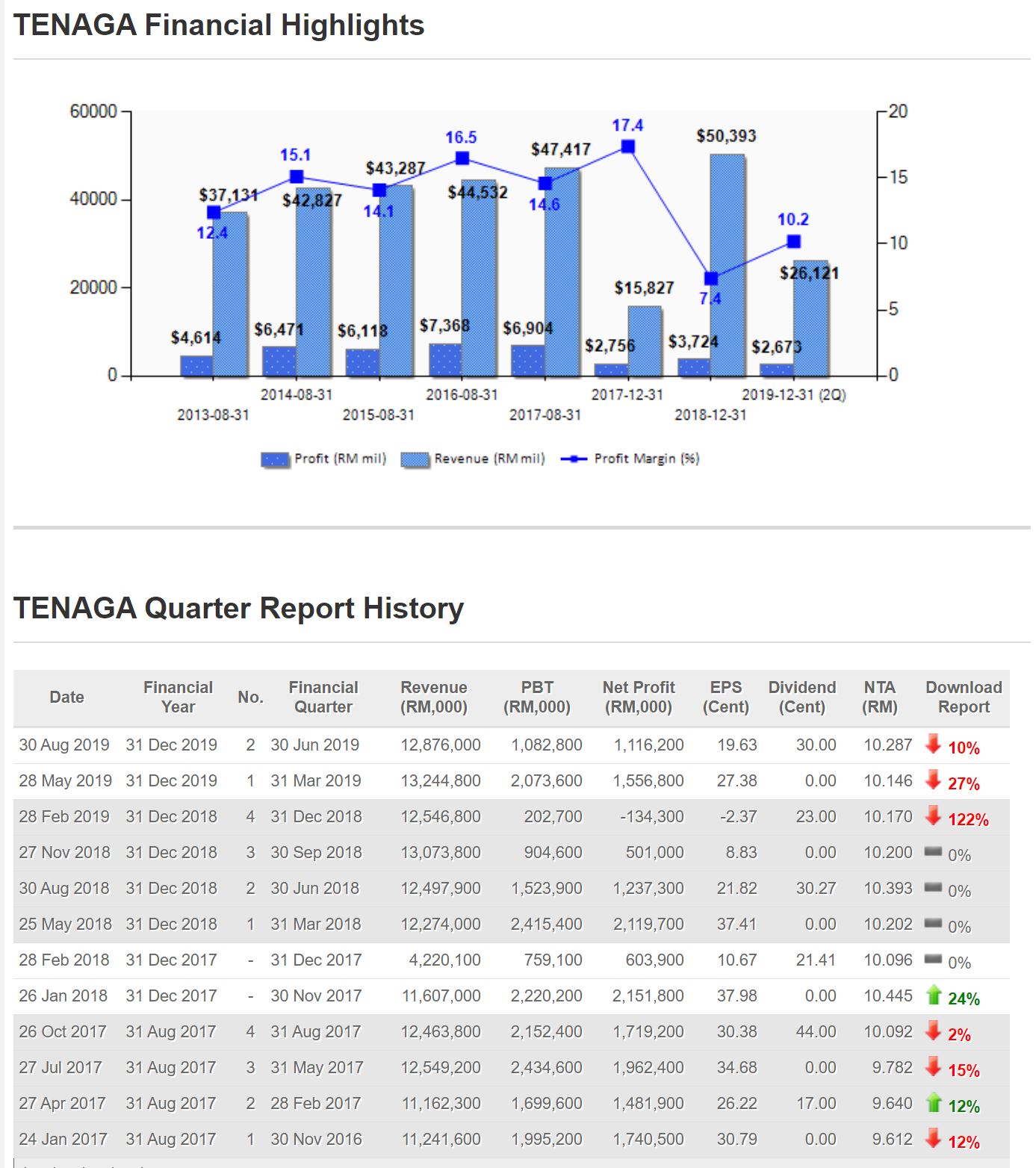Malaysia Stock Analysis – Tenaga (5347)


Tenaga Nasional Berhad (Tenaga) was founded in 1949 and is
headquartered in Kuala Lumpur, Malaysia. The company is mainly engaged
in power generation through thermal power plants and hydropower plants,
transmission and distribution of electricity in Malaysia
The company also manages and operates a transmission network
interconnected with Thailand and Singapore. In addition, Tenaga also
produces transformers, high voltage switchgear and cables.
In general, Tenaga is one of the top 30 blue chip stocks in Malaysia
with a market capitalization of around 74 billion, and currently has the
third largest market capitalization in Malaysia.
Tenaga has four main businesses, namely Generation, Grid, Distribution Network, and Retail.
Tenaga users are divided into home users, business users, industrial
users and others (eg street lights). And the majority is home users.
Tenaga is capable to produce approximately 10,918 MW of electrical
energy. Approximately 119,000 GWh of electricity can be sold in one
year.
The Equivalent Availability Factor (EAF) of the Tenaga Peninsula Power
Plant (the index used to measure plant efficiency) is 85%-90%; and the
Equivalent Unplanned Outage Factor (EUOF) (the index used to measure
plant failure time) is only 2.7% - 7.1%.
In the past five years, TENAGA's turnover has been growing steadily.
The growth rate over the past five years is an average of 4.2% per year.
Due to the change in the financial reporting date of TENAGA in 2017,
there are two more quarters in FY2017. In order to be fair, the data for
these two quarters will not be included in the calculation when
comparing.
From 2014 to 2017, TENAGA's net profit basically did not increase,
maintaining an average of about RM 6.7 bil. But in FY 2018, TENAGA's net
profit was only RM 3.7 bil, a drop of 46%.
However, is the net profit for the 2018 fiscal year really as bad as it seems?
Looking closely, TENAGA has an asset impairment of RM1.07 bil, a
one-time foreign exchange loss of RM 0.39 bil and regulatory adjustments
in fiscal year 2018. If these one-time gains and losses are removed,
the company's after-tax profit It is RM 5.44 bil.
Future Prospect:
In the coming year, the company will strive to expand the power generation business turnover plan to expand the company restructuring plan, and cultivate high-skilled, knowledgeable and effective teams to meet future challenges.
The company will increase thermoelectric production through a 70% owned Jimah East Power plant to meet growing demand.
As the company moves into a fully digital and automated grid and
distribution network in the near future, the company hopes to establish
its own grid college in the future, focusing on developing subject
matter experts with the necessary financial, technical and leadership
skills to become the grid department.
In terms of infrastructure, the company will continue to strengthen the
central 500kV grid highway to ensure continuous power supply, reduce
transmission losses, and equipped with 3,000 additional distribution
substations and DA technology. The company will also work to complete
the asset investment plan to submit grid and distribution network
proposals to governments and regulators prior to the upcoming third
regulatory period, RP3 (2021-2023).
Management believes that the implementation of their highly skilled
workforce, coupled with the reimagined TNB strategy, will help the
company seize the industry's new opportunities for a more sustainable
future.
https://klse.i3investor.com/blogs/LouisYapInvestment/232115.jsp
